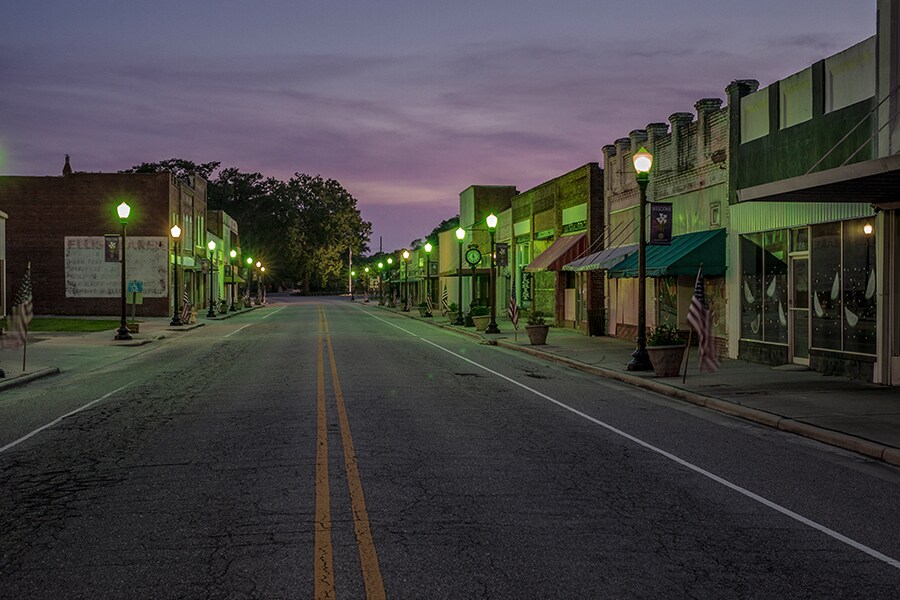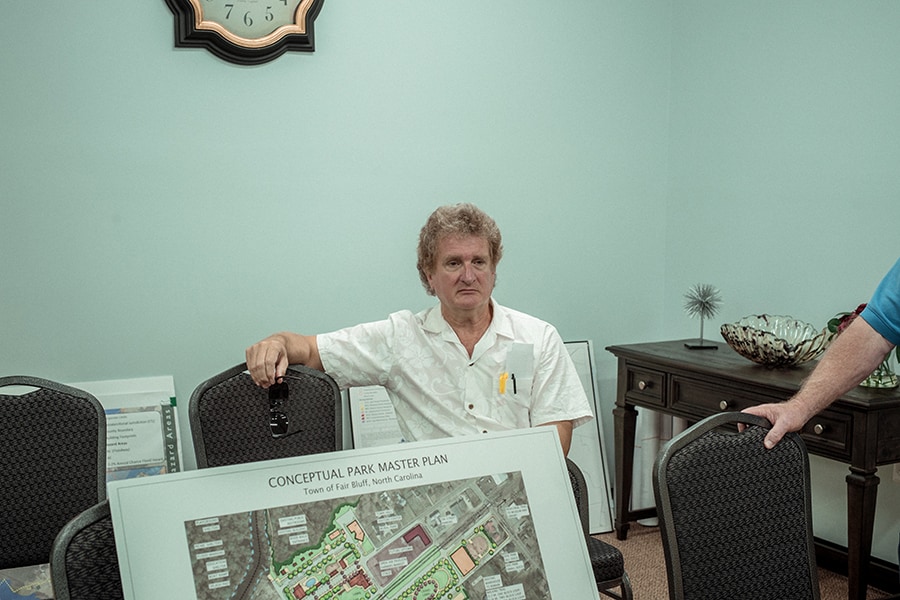
Climate change is bankrupting America's small towns
Rather than bouncing back, places hit repeatedly by hurricanes, floods and wildfires are unraveling as residents and employers leave, shrinking the tax bases and making it harder to fund basic services
 The abandoned downtown of Fair Bluff, N.C., five years since flooding from Hurricane Matthew devastated the small town, on June 18, 2021. Climate shocks have pushed already-struggling small rural communities like Fair Bluff to the brink of insolvency. Rather than bouncing back, many are simply unraveling.
The abandoned downtown of Fair Bluff, N.C., five years since flooding from Hurricane Matthew devastated the small town, on June 18, 2021. Climate shocks have pushed already-struggling small rural communities like Fair Bluff to the brink of insolvency. Rather than bouncing back, many are simply unraveling.
Image: Mike Belleme/The New York Times
FAIR BLUFF, N.C. — It has been almost five years since Hurricane Matthew flooded the small town of Fair Bluff, on the coastal plain of North Carolina. But somehow, the damage keeps getting worse.
The storm submerged Main Street in 4 feet of water, destroyed the town hall and the police and fire departments, and flooded almost one-quarter of Fair Bluff's homes. After two weeks underwater, the roads buckled. The school and grocery store shut, then did not reopen. When Hurricane Florence submerged the same ground two years later, in 2018, there was little left to destroy.
What started as a physical crisis has become an existential one. The town’s only factory, which made vinyl products, closed a few months after Matthew. The population of around 1,000 fell by about half. The federal government tried to help, buying the homes of people who wanted to leave, but those buyouts meant even less property tax, tightening the fiscal noose.
Al Leonard, the town planner, who is responsible for its recovery, said his own job may have to be eliminated, and maybe the police department, too.
Climate shocks are pushing small rural communities like Fair Bluff, many of which were already struggling economically, to the brink of insolvency. Rather than bouncing back, places hit repeatedly by hurricanes, floods and wildfires are unraveling; residents and employers leave, the tax base shrinks, and it becomes even harder to fund basic services.
©2019 New York Times News Service








